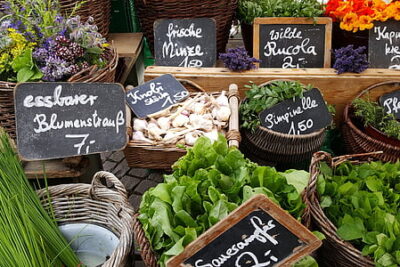
Captivating Succulent Beauty: A Photography Journey

Succulents have become increasingly popular in recent years, and their unique beauty and versatility have captivated people all over the world. These plants, known for their fleshy leaves and ability to store water, come in a wide variety of shapes, colors, and sizes, making them a favorite subject for photographers. From close-up shots that capture the intricate details of their leaves to stunning landscape images that showcase their natural habitats, photographing succulents offers endless opportunities for creativity and exploration.
We will delve into the world of succulent photography and explore the various techniques and tips for capturing their captivating beauty. We will discuss the importance of lighting and composition, as well as the different angles and perspectives that can be used to create visually stunning images. Additionally, we will explore the use of macro photography to capture the intricate details of succulent leaves, as well as the use of different lenses and filters to enhance the colors and textures of these plants. Whether you are a beginner or an experienced photographer, this article will provide you with valuable insights and inspiration for capturing the captivating beauty of succulents through your lens.
- Choose a succulent with unique colors and textures for a captivating photograph
- Experiment with different angles and perspectives to highlight the beauty of succulents
- Utilize natural lighting to enhance the colors and details of the succulent
- Use a macro lens to capture the intricate details of the succulent's leaves and patterns
- Play with depth of field to create a blurred background that makes the succulent stand out
- Try different compositions, such as close-ups or groupings of succulents, to add interest to your photographs
- Experiment with black and white photography to create a more dramatic and artistic effect
- Use props and accessories, such as stones or decorative pots, to enhance the visual appeal of the succulent
- Edit your photos using photo editing software to enhance colors, contrast, and sharpness
- Share your captivating succulent photographs on social media or create a photography portfolio to showcase your work
- Frequently Asked Questions
Choose a succulent with unique colors and textures for a captivating photograph
1. Research and choose a unique succulent
When embarking on a photography journey with succulents, it is important to select a plant that stands out from the rest. Look for succulents with vibrant colors, interesting shapes, and textures. Some examples of visually appealing succulents include the Echeveria 'Lola' with its mesmerizing pink and blue hues, or the Haworthia cooperi with its translucent leaves. Conduct thorough research to find the perfect succulent that catches your eye and sparks your creativity.
2. Consider the lighting conditions
Lighting plays a crucial role in photography, and succulents are no exception. Determine whether you want to capture your succulent in natural or artificial light. Natural light can create stunning shadows and highlights, especially during the golden hour, which is the hour after sunrise or before sunset. On the other hand, artificial lighting allows for more control over the intensity and direction of light. Experiment with different lighting setups to achieve the desired effect and enhance the unique features of your succulent.
3. Experiment with composition
Composition is key to creating captivating photographs. Consider the rule of thirds by dividing your frame into nine equal parts and placing your succulent along the intersecting lines or at their intersections. This technique adds balance and interest to your image. Additionally, try different angles and perspectives to highlight the intricate details of your succulent. Get down low for a worm's eye view or experiment with aerial shots to showcase the overall shape and patterns.
4. Play with depth of field
Manipulating the depth of field can add depth and dimension to your succulent photographs. Use a wide aperture (small f-number) to achieve a shallow depth of field, blurring the background and emphasizing the sharpness of your succulent. Alternatively, a narrow aperture (large f-number) can result in a greater depth of field, keeping both the succulent and the background in focus. Experiment with different apertures to create various visual effects and enhance the overall composition.
 DIY Succulent Terrariums: Simple Steps for Stunning Results
DIY Succulent Terrariums: Simple Steps for Stunning Results5. Capture the details
Succulents are known for their intricate details and unique textures. Get up close and personal with your succulent to capture its beauty in detail. Use a macro lens or switch your camera to macro mode if available. Focus on the intricate patterns, the tiny hairs on the leaves, or the water droplets after a gentle misting. These details add a layer of interest and make your succulent photographs truly captivating.
6. Edit and enhance
Once you have captured your succulent's captivating beauty, take some time to edit and enhance your photographs. Adjust the brightness, contrast, and saturation to bring out the true colors of your succulent. Experiment with different filters or presets to add a unique touch to your images. Remember to strike a balance between enhancing the photo and maintaining its natural beauty.
Photographing succulents is an exciting journey that allows you to capture the captivating beauty of these unique plants. By choosing a succulent with unique colors and textures, considering lighting conditions, experimenting with composition and depth of field, capturing the intricate details, and enhancing your photographs through editing, you can create stunning images that showcase the mesmerizing allure of succulents.
Experiment with different angles and perspectives to highlight the beauty of succulents
When it comes to capturing the captivating beauty of succulents in photographs, experimenting with different angles and perspectives can make all the difference. These unique plants have a mesmerizing geometric structure and intricate patterns that deserve to be showcased in the most visually appealing way.
One technique you can try is getting up close and personal with your succulent subjects. Use a macro lens to capture the intricate details of their leaves, capturing the fine textures and patterns that often go unnoticed. By focusing on the tiny details, you can create stunning images that highlight the delicate nature of succulents.
On the other hand, stepping back and taking a wider shot can showcase the overall beauty and symmetry of the succulent arrangement. Position yourself at a lower angle to capture the succulents against the sky or a plain background, emphasizing their unique shapes and forms. By experimenting with different distances and angles, you can create images that evoke a sense of awe and wonder.
 Moss and Succulents: A Unique Aesthetic for Stunning Décor
Moss and Succulents: A Unique Aesthetic for Stunning DécorPlay with light and shadows to add depth and drama to your succulent photography
Lighting plays a crucial role in photography, and succulents are no exception. By playing with light and shadows, you can add depth, drama, and a touch of magic to your succulent photography.
One way to enhance the beauty of succulents is by photographing them during the golden hour, which is the time shortly after sunrise or before sunset. The soft, warm light during this time of day creates a gentle glow that can make your succulents appear even more enchanting.
Experimenting with backlighting can also produce stunning results. Place your succulent in front of a light source, such as a window or the sun, and allow the light to shine through their leaves. This creates a beautiful silhouette effect, showcasing the intricate shapes and textures of the succulent.
Lastly, don't be afraid to embrace shadows. Shadows can add depth and dimension to your photographs, creating a sense of mystery and intrigue. Play with the positioning of your succulent and the light source to create captivating shadow patterns that elevate your images to a whole new level.
Utilize color contrast to make your succulent photography pop
Color contrast is a powerful tool in photography that can make your succulent images truly pop. Succulents come in a wide range of hues, from vibrant greens to deep purples and even fiery oranges. By pairing succulents with backgrounds or props in complementary or contrasting colors, you can create visually striking compositions.
For example, placing a succulent with rich green leaves against a bright red or orange background can create a stunning visual contrast that grabs attention. Alternatively, pairing a succulent with purple-toned leaves against a background of cool blues can create a calming and harmonious composition.
Remember to experiment and have fun with color in your succulent photography. Try different combinations and observe how they interact with each other. You may be pleasantly surprised by the captivating results you can achieve.
 Where to Find Bulk Succulent Pots at a Discounted Price
Where to Find Bulk Succulent Pots at a Discounted PriceBy experimenting with different angles, playing with light and shadows, and utilizing color contrast, you can elevate your succulent photography to a whole new level. Let your creativity flow and allow these captivating plants to inspire you on a photography journey like no other.
Utilize natural lighting to enhance the colors and details of the succulent
When photographing succulents, it is important to take advantage of natural lighting to bring out the vibrant colors and intricate details of these captivating plants. Natural light not only adds a touch of authenticity to your photographs but also allows you to showcase the unique characteristics of each succulent.
To make the most of natural lighting, try to photograph your succulent during the golden hours, which are the first and last hours of sunlight in a day. During these times, the light is softer and warmer, casting a gentle glow on your subject. This soft light helps to accentuate the colors and textures of the succulent, creating a captivating effect.
Position your succulent near a window or take it outdoors to ensure it receives ample natural light. Avoid harsh midday sunlight, as it can create unflattering shadows and wash out the colors of the succulent. If you are photographing outdoors, consider using a diffuser to soften the light and reduce any harsh shadows.
Experiment with different angles and perspectives to capture the intricate details of the succulent. Get up close and personal, focusing on the patterns, textures, and shapes that make each succulent unique. By highlighting these details, you can truly showcase the beauty of these plants through your photographs.
Don't be afraid to play with light and shadow to add depth and dimension to your images. Position the succulent in such a way that the light creates interesting shadows or highlights specific areas. This technique can add an element of intrigue and drama to your succulent photography.
 Enhance Your Garden with Trailing Vine Succulents: A Guide
Enhance Your Garden with Trailing Vine Succulents: A GuideLastly, always remember to keep your succulent well-watered and healthy before photographing it. A healthy succulent will have vibrant colors and plump leaves, making it even more captivating in your photographs.
Use a macro lens to capture the intricate details of the succulent's leaves and patterns
When photographing succulents, one of the best tools you can have in your arsenal is a macro lens. With its ability to focus on the smallest of details, a macro lens will allow you to capture the intricate patterns and textures found on the succulent's leaves.
By getting up close and personal with your subject, you can reveal the hidden beauty that often goes unnoticed. The tiny hairs, delicate lines, and unique shapes of each leaf will be magnified, creating a visually captivating image.
When using a macro lens, make sure to adjust your settings accordingly. A wide aperture, such as f/2.8 or f/4, will help to create a shallow depth of field, isolating the details you want to highlight. Additionally, using a tripod can be beneficial to ensure sharpness and minimize camera shake.
Experiment with different angles and compositions to find the most interesting and visually appealing perspective. You can try shooting from above to capture the symmetry of the succulent's rosette-shaped leaves, or get down to eye level to showcase the unique patterns from a different angle.
Don't be afraid to get creative with your macro shots. Play with lighting, shadows, and reflections to add depth and dimension to your images. The intricate details of succulents offer endless possibilities for artistic expression.
 Discover Unique Succulents in Wood for Stylish Home Decor
Discover Unique Succulents in Wood for Stylish Home DecorRemember, capturing the beauty of succulents with a macro lens is all about paying attention to the small things. Take your time, explore different angles, and let the intricate details of these fascinating plants shine through in your photographs.
Play with depth of field to create a blurred background that makes the succulent stand out
When it comes to capturing the captivating beauty of succulents through photography, one technique that can truly make your images stand out is playing with depth of field. By using a wide aperture and focusing on the succulent itself, you can create a beautifully blurred background that helps to emphasize the intricate details and textures of the plant.
This technique works particularly well when photographing succulents with vibrant colors or unique shapes. By blurring the background, you can draw the viewer's attention directly to the subject, creating a visually striking image.
When setting up your shot, be sure to position yourself at a close distance to the succulent and use a macro lens if possible. This will allow you to capture the fine details and textures of the plant, further enhancing its beauty.
Tips for achieving the desired depth of field:
- Use a wide aperture (low f-number) to create a shallow depth of field.
- Focus on the succulent itself, ensuring that it is sharp and in focus.
- Experiment with different angles and compositions to find the most captivating perspective.
- Consider using a tripod to stabilize your camera and prevent any unwanted camera shake.
Remember, the key to capturing the captivating beauty of succulents through photography is to experiment and have fun. Don't be afraid to try different techniques and push your creative boundaries. With practice and patience, you'll be able to create stunning images that truly showcase the unique allure of these plants.
 Stained Glass-Friendly Succulents: Plants for Decor
Stained Glass-Friendly Succulents: Plants for DecorTry different compositions, such as close-ups or groupings of succulents, to add interest to your photographs
When it comes to capturing the captivating beauty of succulents through photography, there are endless possibilities for creativity. One way to add interest to your succulent photographs is by experimenting with different compositions.
Close-up shots of individual succulents can reveal intricate details and textures that might otherwise go unnoticed. By focusing on the unique patterns and shapes of the succulent leaves, you can create visually stunning images that highlight their natural beauty. Use a macro lens or get as close as possible to capture the fine details and make your audience feel like they can almost touch the succulent.
On the other hand, grouping succulents together can create a visually appealing composition. Arrange succulents of different shapes, sizes, and colors in a way that complements each other. You can create a harmonious composition by considering elements such as color contrast, texture variation, and varying heights. This can result in a photograph that showcases the diversity and beauty of succulents as a whole.
Experiment with different angles and perspectives to find the most captivating composition. Capture succulents from above, at eye level, or even from below to add unique perspectives to your photographs. Don't be afraid to get creative and try unconventional angles, as they can often lead to unexpected and captivating results.
Remember to pay attention to lighting when photographing succulents. Natural light can enhance the colors and textures of succulents, so try to shoot during the golden hour (early morning or late afternoon) for soft, warm lighting. If shooting indoors, consider using diffused light or a softbox to create a gentle and flattering illumination.
Lastly, don't forget to experiment with the depth of field. By using a shallow depth of field, you can create a pleasing bokeh effect, where the background becomes beautifully blurred while the succulent remains in sharp focus. This technique can help draw attention to the details of the succulent while adding a dreamy and ethereal feel to your photograph.
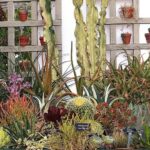 Discover the Best Place to Join the Succulent of the Month Club
Discover the Best Place to Join the Succulent of the Month ClubBy trying different compositions such as close-ups or groupings of succulents, experimenting with angles and perspectives, paying attention to lighting, and playing with depth of field, you can embark on a captivating photography journey that showcases the unique beauty of succulents. Happy shooting!
Experiment with black and white photography to create a more dramatic and artistic effect
One of the most fascinating aspects of succulents is their unique shapes and textures. To capture their captivating beauty in a different light, consider experimenting with black and white photography. This technique can add a level of drama and artistic flair to your succulent images, making them truly stand out.
By removing color from the equation, black and white photography allows you to focus on the intricate details and patterns of the succulent leaves, stems, and spines. It emphasizes the contrast between light and shadow, enhancing the overall composition.
When shooting in black and white, it's crucial to pay attention to the lighting conditions. Soft, diffused lighting can help bring out the delicate textures and create a more subtle and ethereal atmosphere. Alternatively, experimenting with harsher lighting can produce bold shadows and highlights, adding an edgy and dramatic element to your photographs.
Composition and framing
When composing your black and white succulent photographs, consider using the rule of thirds to create a visually pleasing and balanced image. Positioning the main subject off-center can add intrigue and create a sense of movement.
Experiment with different angles and perspectives to capture the unique shapes and contours of the succulents. Get up close and fill the frame with the intricate details, or step back to capture the overall form and structure. Don't be afraid to get creative and break the conventional rules of composition, as black and white photography offers a chance to explore unconventional viewpoints.
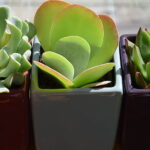 Find the Best Wholesale Suppliers for Bulk Succulent Plants Near You
Find the Best Wholesale Suppliers for Bulk Succulent Plants Near YouEditing and post-processing
After capturing your black and white succulent images, take the time to enhance them further through editing and post-processing. Adjusting the contrast, brightness, and levels can help bring out the details and add depth to the photograph.
Consider experimenting with different black and white conversion techniques, such as using filters or adjusting the tonal range. These techniques can help you achieve the desired mood and atmosphere in your photographs.
Remember, black and white photography is an art form that allows for creative expression. Don't be afraid to experiment, try new techniques, and push the boundaries of what you think is possible. Let your imagination run wild and capture the captivating beauty of succulents through the lens of black and white photography.
Use props and accessories, such as stones or decorative pots, to enhance the visual appeal of the succulent
When it comes to capturing the beauty of succulents through photography, one of the key elements is the use of props and accessories. These additional elements can help elevate the visual appeal of the succulent and create a captivating composition.
One popular choice for props is stones or pebbles, which can be strategically placed around the succulent to add texture and depth to the image. The contrast between the smooth succulent leaves and the rough texture of the stones can create a visually striking effect. Consider experimenting with different sizes and colors of stones to find the perfect combination that complements your succulent.
Another option is to incorporate decorative pots or planters into your composition. These pots can serve as a beautiful backdrop for your succulent, adding a touch of elegance and style to the overall image. Opt for pots with interesting patterns or unique shapes that complement the color and form of your succulent.
Remember to keep the focus on the succulent itself while using props and accessories as complementary elements. The goal is to enhance the natural beauty of the succulent, not to overwhelm it. Carefully choose props that enhance the colors, textures, and shapes of the succulent, while maintaining a harmonious balance in the overall composition.
 Uncover Expert Tips for Your Succulent Garden: Meet the Emerging Guru
Uncover Expert Tips for Your Succulent Garden: Meet the Emerging GuruEdit your photos using photo editing software to enhance colors, contrast, and sharpness
One of the key factors in creating captivating succulent photography is enhancing the colors, contrast, and sharpness of your photos. By using photo editing software, you can take your images to the next level and make them truly eye-catching.
Start by adjusting the colors of your succulent photos. You can increase the saturation to make the colors pop or play around with the hue to create a unique and artistic look. Experiment with different color schemes to find the one that best complements the natural beauty of succulents.
Next, focus on the contrast of your photos. Increasing the contrast can make the details of the succulent leaves stand out and create a more dramatic effect. Conversely, decreasing the contrast can give your photos a softer and more ethereal feel. Find the right balance that suits your artistic vision and the mood you want to convey.
Sharpness is another crucial aspect of succulent photography. You want your photos to be crisp and clear, showcasing every intricate detail of the succulent plants. Use the sharpening tool in your photo editing software to enhance the sharpness of the edges and bring out the textures. However, be careful not to overdo it, as excessive sharpening can result in an unnatural and artificial look.
Don't be afraid to experiment and play around with different editing techniques. Every succulent photo is unique, and there's no one-size-fits-all approach to editing. Trust your artistic instincts and let your creativity guide you in creating captivating succulent photography.
Are you captivated by the beauty of succulents? Do you find yourself mesmerized by their unique shapes, vibrant colors, and intricate patterns? If so, why not share your love for these fascinating plants through the art of photography?
With the rise of social media platforms like Instagram, Facebook, and Pinterest, it has never been easier to showcase your captivating succulent photographs to a wide and appreciative audience. Whether you are an amateur photographer or a seasoned professional, capturing the stunning details of succulents can be a rewarding and fulfilling experience.
 Step-by-Step Guide to Stunning Succulent Home Displays
Step-by-Step Guide to Stunning Succulent Home DisplaysBy sharing your succulent photographs on social media, you can connect with other plant enthusiasts, join photography communities, and even gain recognition for your talent. Use hashtags like #succulentphotography or #succulentlovers to reach a targeted audience and increase your visibility. Don't forget to engage with other photographers and succulent lovers by liking and commenting on their posts – this will help you build a network and attract more followers.
If you're looking for a more curated and personalized way to showcase your succulent photography, consider creating a photography portfolio. Whether it's a physical album or an online gallery, a portfolio allows you to display your work in a professional and organized manner. You can categorize your photographs by species, colors, or compositions, creating a visually pleasing and cohesive collection.
When creating your succulent photography portfolio, it's important to choose high-quality images that truly capture the essence of these plants. Focus on the intricate details, play with light and shadows, and experiment with different angles and compositions. A strong composition can make your photograph stand out and evoke emotions in the viewer.
Don't shy away from experimenting with different editing techniques to enhance the colors and textures of your succulent photographs. Adjusting the contrast, saturation, and sharpness can help bring out the vibrant hues and intricate patterns that make succulents so captivating.
Remember, photography is not just about taking pictures – it's about telling a story and evoking emotions. Try to convey the beauty, resilience, and uniqueness of succulents through your photographs. Capture their ability to thrive in harsh conditions, their intricate forms that resemble nature's art, and the sense of tranquility they bring to any space.
So, whether you choose to share your captivating succulent photographs on social media or create a photography portfolio, embrace the beauty of succulents and let your creativity shine through your lens. Happy shooting!
Frequently Asked Questions
1. What is "Captivating Succulent Beauty: A Photography Journey"?
"Captivating Succulent Beauty: A Photography Journey" is a photography project that focuses on capturing the beauty and uniqueness of succulent plants through stunning images.
2. Who is the photographer behind this project?
The photographer behind this project is [Name]. They are a skilled and passionate photographer with a special interest in succulent plants.
3. Where can I view the photographs from this project?
You can view the photographs from "Captivating Succulent Beauty: A Photography Journey" on [website/gallery name]. They are available for online viewing and purchase.
4. Are there any upcoming exhibitions or events related to this project?
Yes, there are upcoming exhibitions and events related to "Captivating Succulent Beauty: A Photography Journey". Please check our website or social media pages for updates on dates and locations.
If you want to read more articles similar to Captivating Succulent Beauty: A Photography Journey, you can visit the Planters and Arrangements category.

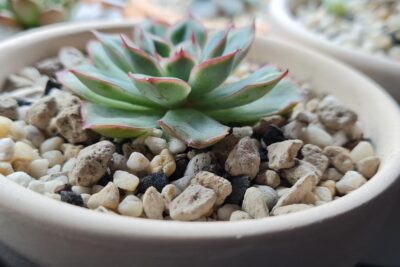
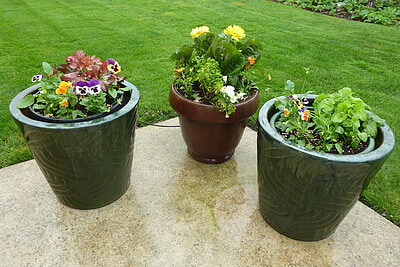


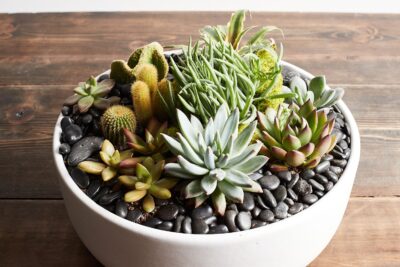
You Must Read